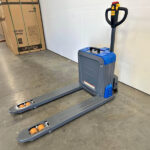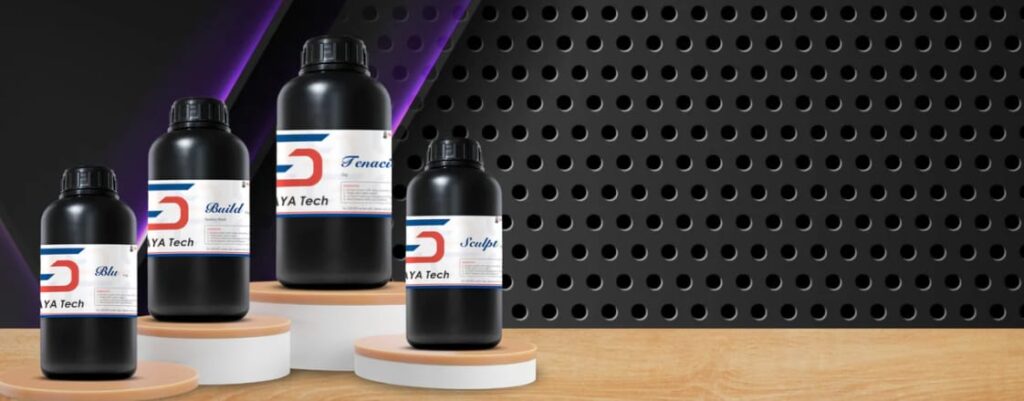Alzheimer’s disease affects over 6 million Americans. In Germany approximately 1.4 million people aged 40 and over have dementia (2022). And in Switzerland, approximately 156,900 people live with dementia (2024).Families watch loved ones struggle with fading memories and declining independence. Current medications offer modest benefits at best. Many come with troubling side effects. Against this backdrop, researchers are exploring a different approach: neurostimulation for Alzheimer‘s.
Instead of targeting protein plaques, these treatments aim to restore damaged electrical networks in the brain. Early results show promise. Some patients experience memory improvements lasting weeks or months. But the science is still developing, and many questions remain unanswered.
How Neurostimulation Works in the Brain?
Alzheimer’s disrupts electrical communication between brain cells. Networks that once hummed with activity fall silent. The hippocampus – crucial for forming new memories – shows particularly severe damage. The default mode network, active during reflection and planning, breaks down too.
Neurostimulation for Alzheimer’s uses gentle electrical or magnetic pulses to reactivate these damaged networks. Two main approaches dominate current research:
Transcranial Direct Current Stimulation (tDCS) applies a steady, weak electrical current through electrodes on the scalp. The current is remarkably mild – typically 1-2 milliamps. Anodal stimulation makes neurons more likely to fire. This can boost activity in underperforming brain regions.
Transcranial Alternating Current Stimulation (tACS) uses oscillating currents matched to specific brain frequencies. Researchers focus particularly on 40 Hz gamma waves. These rhythms play key roles in memory formation and attention. Alzheimer’s patients show reduced gamma activity in affected brain areas.
Recent Clinical Trial Results
Multiple studies published in 2024 and 2025 provide encouraging data about neurostimulation for Alzheimer’s.
A March 2025 trial at UT Southwestern tested tDCS in Alzheimer’s patients. Researchers applied stimulation to brain networks associated with memory. Around one-third of patients receiving active treatment showed clinically meaningful improvements in verbal learning. These gains lasted up to eight weeks after treatment ended.
Lead researcher Christian LoBue noted that success rates matched those seen in early neuromodulation trials for depression – trials that eventually led to FDA approval. While preliminary, the results suggest real therapeutic potential.
A meta-analysis examining 40 Hz gamma tACS reviewed seven studies with Alzheimer’s patients. The analysis found significant improvements in overall cognition, memory, and cholinergic transmission – a neurotransmitter system severely affected by Alzheimer’s disease.
Interestingly, the analysis revealed that home-based treatment improved memory more effectively than clinic sessions when targeting specific brain regions. This finding challenges assumptions that clinic settings always produce better outcomes.
Targeting Specific Brain Regions
Where you place electrodes matters enormously. Different brain areas serve different cognitive functions. Research has identified several promising targets for neurostimulation for Alzheimer’s.
The Dorsolateral Prefrontal Cortex governs executive functions like planning, decision-making, and attention. A 2024 randomized controlled trial placed anodal tDCS over the left dorsolateral prefrontal cortex in 30 mild Alzheimer’s patients. After 10 daily sessions, patients showed significant improvements in concentration, calculation, orientation, language ability, and verbal fluency.
Cognitive flexibility and abstract thinking also improved. These aren’t just test score changes – they translate to real improvements in daily functioning.
The Precuneus sits in the brain’s midline and plays crucial roles in episodic memory and self-reflection. Multiple studies target this region with 40 Hz tACS. Research published in 2024 found that stimulating the precuneus improved memory test scores in both mild cognitive impairment and early Alzheimer’s patients.
The Temporal Lobes process auditory information and store long-term memories. Several trials apply bilateral temporal stimulation. A 2021 study used 40 Hz tACS over both temporal lobes for 20 minutes per session, five times weekly, over six weeks. Patients showed improvements in Mini-Mental State Examination scores immediately after treatment. Benefits persisted at 12-week follow-up.
Home Treatment: A Practical Option?
Traditional neurostimulation for Alzheimer’s required regular clinic visits. For elderly patients with memory problems and mobility limitations, this created significant barriers. Transportation challenges. Caregiver burden. Anxiety in unfamiliar medical settings.
Home-based neurostimulation changes this equation. Several research groups now test devices designed for home use with remote physician monitoring.
The Miamind neurostimulator represents one approach to personalized home treatment. The system uses MRI scans to create detailed brain maps for each patient. Computer algorithms calculate optimal electrode positions based on individual anatomy. A 3D-printed cap with up to 34 electrodes ensures precise, reproducible targeting.
This personalization addresses a key challenge in brain stimulation research. Standard electrode positions work reasonably well for average patients. But brain anatomy varies significantly between individuals. Custom positioning helps maximize benefits while minimizing side effects.
A 2021 study tested home-based 40 Hz tACS targeting the left angular gyrus. Eight Alzheimer’s patients received treatment 5-7 times weekly for 14 weeks. Memory scores improved during treatment and remained elevated even during follow-up periods. The home setting appeared to support consistent treatment adherence.
Safety Profile and Side Effects
Extensive research confirms that neurostimulation for Alzheimer’s carries minimal risk when properly administered. A 2024 meta-analysis of 40 Hz gamma tACS found no serious adverse events across seven studies.
Common side effects remain mild and temporary:
- Slight tingling or itching under electrodes (30-70% of patients)
- Mild headaches (10-15%)
- Temporary fatigue (20-30%)
- Brief skin redness (under 10%)
These effects typically resolve within minutes to hours after treatment. No studies report permanent damage when devices are used according to protocol.
Modern home devices include multiple safety features. Sensors detect when electrodes lose proper skin contact and pause treatment automatically. Preprogrammed session limits prevent overstimulation. Remote monitoring allows physicians to track compliance and address concerns.
Still, medical oversight remains essential. Reputable manufacturers require physician prescriptions. Training sessions teach proper device use. Regular check-ins monitor progress and adjust treatment parameters as needed.
What the Science Still Can’t Answer
Despite encouraging results, significant questions about neurostimulation for Alzheimer’s remain unanswered.
Optimal treatment duration is unclear. Some studies use 10 sessions. Others continue for months. How long do benefits last after treatment stops? Do patients need ongoing maintenance sessions?
Individual variability in response rates poses challenges. About one-third to two-thirds of patients show meaningful improvements. But predicting who will respond remains difficult. Age, disease severity, brain anatomy, and genetic factors likely all play roles.
Mechanism of action needs clarification. Does neurostimulation strengthen existing connections? Promote new synapse formation? Reduce inflammation? Improve blood flow? Probably all of these – but the relative importance of each mechanism isn’t clear.
Long-term effects require further study. Most trials track patients for weeks or months. What happens over years? Does repeated stimulation maintain benefits? Could effects diminish over time?
The Road Ahead
Research into neurostimulation for Alzheimer’s continues expanding rapidly. The National Institute on Aging currently funds 157 active nondrug trials for Alzheimer’s and related dementias. Many involve various forms of brain stimulation.
MIT researchers recently published a comprehensive review documenting a decade of gamma stimulation research. Studies using light, sound, electrical stimulation, or magnetic pulses all show beneficial effects when delivered at 40 Hz. Animal studies reveal specific cellular and molecular responses in neurons, microglia, astrocytes, and blood vessels.
Clinical trials are growing more sophisticated. Researchers combine stimulation with brain imaging to understand neural changes. They test different frequencies, intensities, and target locations. They explore optimal timing – single sessions versus multiple courses versus continuous maintenance.
The field is also addressing practical barriers. Home-based systems reduce treatment burden. Personalized approaches may improve response rates. Integration with standard care helps patients benefit from multiple therapeutic strategies simultaneously.
What Families Need to Know
Neurostimulation for Alzheimer’s represents a genuinely different approach to treatment. It doesn’t cure the disease. It doesn’t stop underlying brain changes. But for some patients, it offers meaningful improvements in memory and daily functioning.
The treatment works best when combined with other interventions. Medications, cognitive training, physical exercise, and social engagement all play important roles. Neurostimulation adds another tool to the therapeutic toolkit.
Families considering this approach need realistic expectations. Not everyone responds. Benefits may be modest even when present. Treatment requires commitment – often daily sessions over weeks or months.
Cost remains a barrier for many. While insurance coverage is expanding, many patients still pay out-of-pocket. Home devices require significant upfront investment. Ongoing costs for supplies and medical supervision add up.
But for families who’ve watched traditional treatments fail, neurostimulation offers something valuable: a new possibility based on solid scientific evidence. Research continues advancing. Devices keep improving. Our knowledge of how to optimize treatment grows deeper each year.
The path forward requires continued rigorous research, careful patient selection, and honest communication about both potential benefits and current limitations. For the millions affected by Alzheimer’s disease, that combination offers genuine reason for hope.






